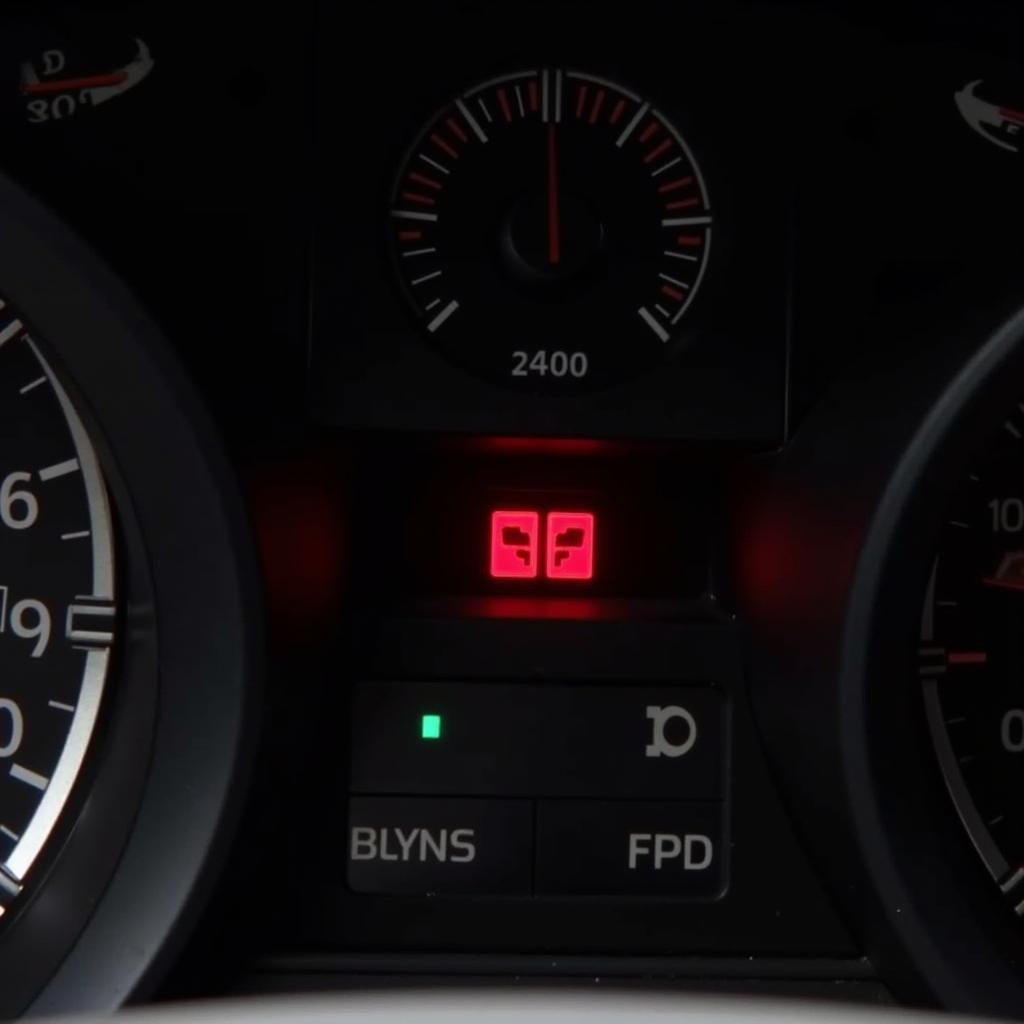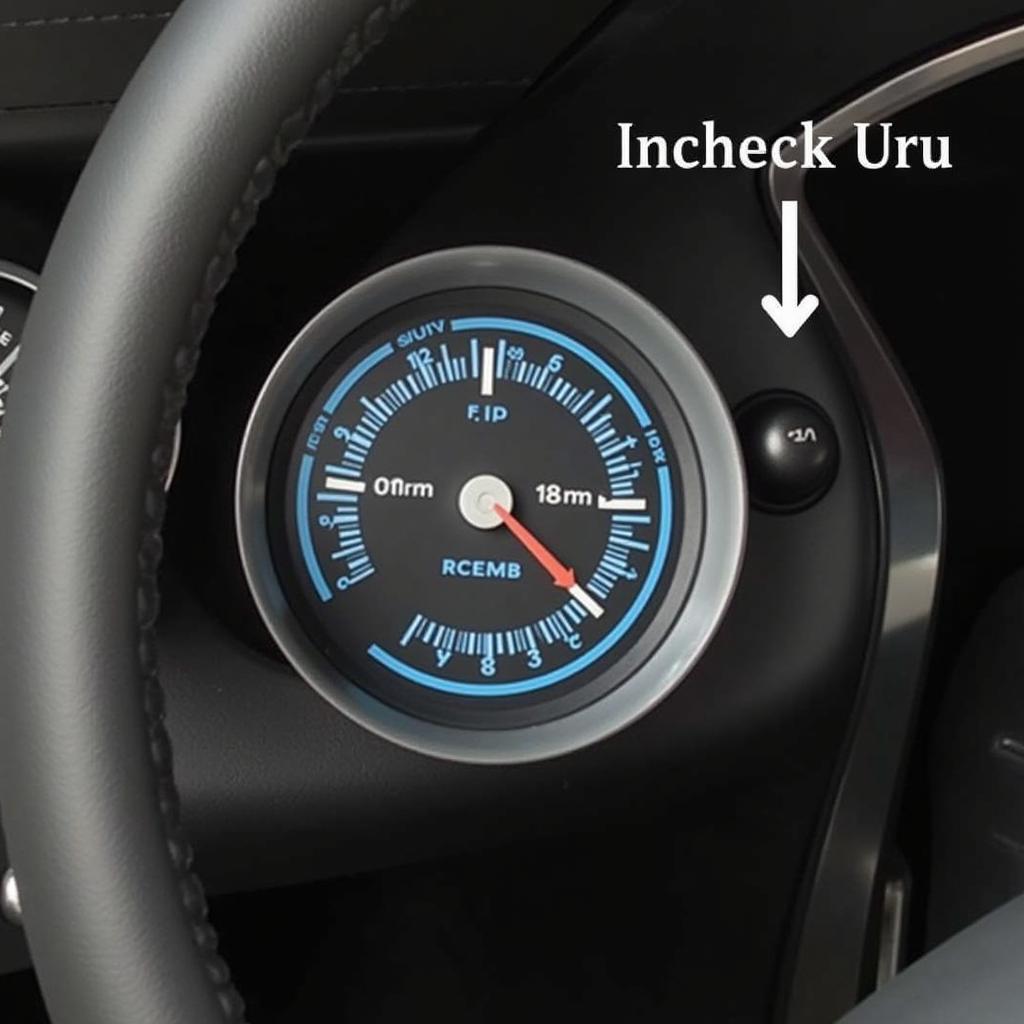Your 1996 Chevrolet C1500’s anti-lock brake warning light is illuminated, and you’re looking for answers. Don’t worry, you’re not alone! This common issue can be frustrating, but understanding the possible causes and potential solutions can put you back on the road quickly.
Common Causes of Anti-Lock Brake Warning Light in 1996 C1500s
The anti-lock brake system (ABS) is designed to prevent wheel lock-up during braking, improving vehicle control and stopping distance. When the warning light comes on, it indicates a potential problem within the system. Here are the most common causes:
1. Low Brake Fluid Level
The ABS system relies on hydraulic pressure to operate. If your brake fluid level is low, it can trigger the warning light. This is often due to a leak in the brake lines, calipers, or master cylinder.
“Check the brake fluid reservoir regularly, and top it off as needed.” – John Smith, Certified Automotive Technician
2. Faulty ABS Sensor
ABS sensors are located on each wheel hub and monitor the wheel speed. If a sensor malfunctions, it can send inaccurate data to the ABS module, triggering the warning light.
3. Defective ABS Module
The ABS module is the brain of the system. If it fails, it can lead to a multitude of issues, including the warning light.
4. Damaged Wiring
Damaged or corroded wiring can disrupt the communication between the ABS sensors, module, and other components, causing the warning light to activate.
5. Loose Wheel Speed Sensor
While uncommon, a loose wheel speed sensor can cause intermittent problems with the ABS system.
6. Faulty Brake Calipers or Rotors
If a brake caliper is sticking or a rotor is warped, it can affect the wheel speed and trigger the warning light.
Troubleshooting Steps
Before attempting repairs, it’s crucial to diagnose the issue. Here’s a step-by-step approach:
- Check the Brake Fluid Level: First, check the brake fluid level in the reservoir. If it’s low, top it off with the correct type of brake fluid. If the level continues to drop, you likely have a leak.
- Scan for Diagnostic Codes: Use an OBD-II scanner to retrieve any diagnostic trouble codes (DTCs) related to the ABS system. These codes can pinpoint the specific issue.
- Inspect the ABS Sensors: Visually inspect the ABS sensors for any damage or corrosion. You can also use a multimeter to test their resistance.
- Test the ABS Module: If the sensors and wiring appear to be in good condition, you may need to test the ABS module. This requires a specialized tool and can be challenging for home mechanics.
- Inspect the Brake Lines and Calipers: Look for any leaks, corrosion, or sticking calipers.
Possible Solutions
The solution for a 1996 C1500 anti-lock brake warning light will depend on the underlying cause.
- Low Brake Fluid: If you find a leak, you’ll need to repair the damaged component.
- Faulty ABS Sensors: Replacing a faulty ABS sensor is a straightforward task.
- Defective ABS Module: You’ll likely need to replace the ABS module, which can be costly.
- Damaged Wiring: You can repair or replace damaged wiring.
- Loose Wheel Speed Sensor: Secure the loose sensor.
- Faulty Brake Calipers or Rotors: Replacing or rebuilding faulty calipers or rotors is necessary.
Warning: Safety First
Remember, the ABS system is crucial for safe braking. If you suspect a problem, it’s best to seek professional assistance.
FAQ
Q: Can I drive my 1996 C1500 with the anti-lock brake warning light on?
A: While you can drive your vehicle, it’s not recommended. The ABS system is compromised, and you may experience wheel lock-up during braking.
Q: How much does it cost to fix an ABS issue?
A: Repair costs can vary significantly depending on the specific issue and the required parts.
Q: What are the consequences of ignoring an anti-lock brake warning light?
A: Ignoring the warning light can lead to reduced braking performance, increased stopping distance, and potential safety hazards.
Q: Can I reset the ABS warning light myself?
A: You may be able to reset the warning light using a scanner, but this doesn’t address the underlying issue.
Q: How long can I drive with an ABS warning light on?
A: It’s best to get the issue diagnosed and repaired as soon as possible.


